
Reinventing Dad
gamer level 6
11320 xp
11320 xp
followers
9
9
Use my invite URL to register (this will give me kudos)
https://boardgaming.com/register/?invited_by=bookman3380
profile badges




recent achievements

Reporter
Earn Reporter XP to level up by completing Reporter Quests!
Earn Reporter XP to level up by completing Reporter Quests!

Knight
Give 100 hearts (loyalty points) to a single game
Give 100 hearts (loyalty points) to a single game

The Silver Heart
Give 10 Silver Hearts to games that you fancy.
Give 10 Silver Hearts to games that you fancy.

I'm a Gamin' Fiend!
Claim that you have played a game today by clicking the "Played Today!" button on a game page 200 times.
Claim that you have played a game today by clicking the "Played Today!" button on a game page 200 times.
Player Stats
Critic (lvl 2)
655 xp
655 xp
Explorer (lvl 5)
4313 xp
4313 xp
Professor (lvl 2)
626 xp
626 xp
Reporter (lvl 4)
1512 xp
1512 xp
About Me
During my teens, I spent many evenings and weekends tossing polyhedral dice, searching for that natural 20 that would change everything. The only board games I played were the standards: Life, Scrabble, Monopoly, Yahtzee.
I got back into board games later in my life. I've always been a collector: pewter figures, comic books, novels, DVDs & Blu-rays, CDs. After watching a Table Top episode revolving around Munchkin, I went out and bought it. And that was that.
I always welcome a chance to sit down with my family and friends and chuck some dice, move some cubes, and draft some cards.
Some games in my collection: Animal Upon Animal; Betrayal at House on the Hill; Once Upon a Time; Paperback; Castles of Burgundy; Telestrations; Tokaido; Patchwork; Forbidden Island; Sentinels of the Multiverse; Takenoko; Battle Line; Gloom; Tsuro; Mice & Mystics; Sushi Go!; Cinelinx; Black Fleet; Rhino Hero, Last Night on Earth; Survive: Escape from Atlantis; The Builders: Middle Ages; and, of course, Munchkin
Twitter: @reinventing_dad



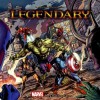

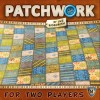


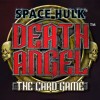






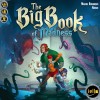

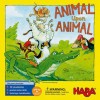

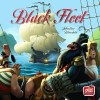




















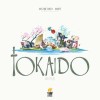



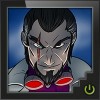
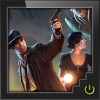

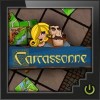






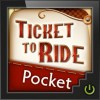







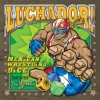
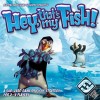



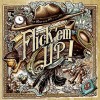



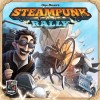
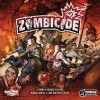
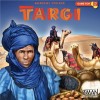
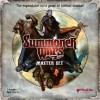






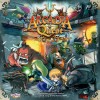

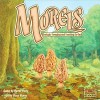

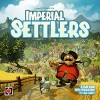
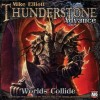





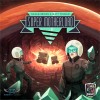
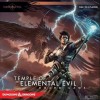



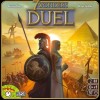

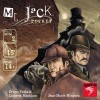
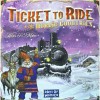










Legendary: A Marvel Deck Building Game
If you’ve ever read a Marvel comic book or watched one of their movies and wondered how it would be to serve on a team of superheroes and face a diabolical evil mastermind intent on world domination (or, at the very least, taking you out), this is your game. Either as a solo game or cooperatively with two to five players, and with a healthy assortment of heroes, big bads, not-so big bads, and scenarios, Marvel Legendary guarantees numerous replays as well as hours of fun.
Initial Thoughts
If you’re interested in giving a deckbuilding game a try, this is a terrific gateway into the genre. If you’re a comic fan interested in giving a deckbuilding game a try, for crying out loud—get this game already! As a former (recovering?) comic book collector, the theme attracted me immediately. When I saw the different expansions that were available beyond the base set, I was hooked. While some find issue with the illustrations on the cards—specifically that the artwork for each hero, mastermind, villain, and henchman group remains the same (i.e. all of Captain America’s cards, regardless of the power on the card, have the same comic art)—I can easily get past that.
What’s In The Box?
*It’s a deckbuilder; you’re gonna get cards. LOTS of cards. Specifically, 560 beautifully illustrated cards including SHIELD Agents, Troopers, and Officers; heroes like Captain America, Nick Fury, Deadpool, Storm, The Hulk, and Wolverine; evil masterminds like Loki, Dr. Doom, Magneto, and the Red Skull; villains like the Skrulls, Hydra, and the Brotherhood of Evil; henchmen like the Sentinels and Foot Ninjas, and Evil Schemes like The Legacy Virus, Midtown Bank Robbery, and Secret Invasion of the Skrull Shapeshifters.
*Big plastic insert with several card dividers and more than enough space to accommodate several of the expansions)
*Gameboard measuring 19 inches x 27 inches
*Rulebook
Gameplay
The players start with a generic, twelve-card hand made up of SHIELD agents and troopers. From that meager start-up hand, you work together to construct a team of superhero cards, using recruitment points to “buy” cards to make your own deck over the course of the game to fight a designated villain. The villains have considerable variety between them, both in strength and powers, and the fight will feel different for each one. For example, when Dr. Doom’s Doombots take over bystanders, the feeling is thematically very different from Sabretooth’s feral swipes. Nonetheless, players do compete a little; saving bystanders does net points that determine who the most heroic was at the end of the game, provided that players did not lose to the villain. But this aspect generally comes across more as more of an afterthought. Heck, you don’t even need to keep track of the hero points if you don’t want to.
The game itself is well thought out, mechanically solid, and easy even for children to learn. Also, since there’s no blood or gore, it’s thematically safe enough for children (even with Deadpool as a hero pick). The game also seems to amp up the difficulty with more players. Many of the ability cards are simply different recruitment or attack values, so the type of cards you play do not vary much, but each heroes strengths and abilities shine through. The Hulk gets stronger when he’s wounded, Black Widow can do more damage if Bystanders have been rescued, Rogue can mimic other players’ powers.
Final Thoughts
I can’t stop playing this game, either solo or with my son. Discovering new ways the heroes combo together, enjoying how thematic the heroes and villains are, savoring the tension as I turn over another villain card (AUGH! NOT ANOTHER SCHEME TWIST!), and bringing down the mastermind—they all combine to make Marvel Legendary a terrific cocktail of superhero fun.